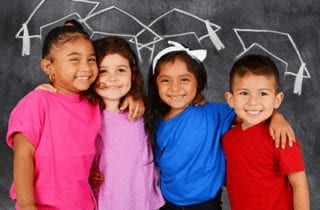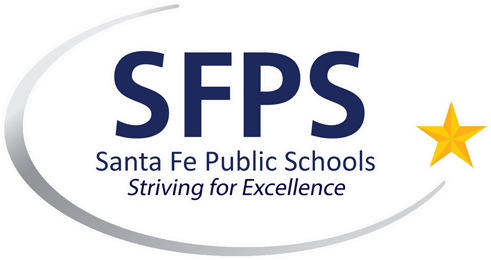Culturally & Linguistically Responsive Instruction
Culture is central to learning. It plays a role not only in communicating and receiving information, but also in shaping the thinking process of groups and individuals. a pedagogy that acknowledges, responds to, and celebrates fundamental cultures offers full, equitable access to education for students from all cultures.
Culturally Responsive Instruction is a pedagogy that recognizes the importance of including students’ cultural references in all aspects of learning.
Some of the characteristics of culturally responsive teaching are:
Positive perspectives on parents and families
Communication of high expectations
Learning within the context of culture
Student-centered instruction
Culturally mediated instruction
Reshaping the curriculum
Teacher as facilitator
Positive Perspectives on Parents and Families
Whether it’s an informal chat as the parent brings the child to school, or in phone conversation or home visits, or through newsletters sent home, teachers can begin a dialogue with family members that can result in learning about each of the families through genuine communication.
Parents are the child's first teacher and are critically important partners to students and teachers. To help parents become aware of how they can be effective partners in the education process, teachers should engage in dialogue with parents as early as possible about parents' hopes and aspirations for their child, their sense of what the child needs, and suggestions about ways teachers can help. Teachers explain their own limitations and invite parents to participate in their child's education in specific ways.
Parent involvement need not be just how parents can participate in school functions. Oftentimes, religious and cultural differences preclude active participation in school activities. However, parental involvement also includes how parents communicate high expectations, pride, and interest in their child's academic life
Communication of High Expectations
When a teacher expresses sympathy over failure, lavishes praise for completing a simple task, or offers unsolicited help, the teacher may send unintended messages of low expectations.
All students should receive the consistent message that they are expected to attain high standards in their school work. This message must be delivered by all that are involved in students' academic lives, that is: teachers, guidance counselors, administrators, and other school personnel. Teachers should understand students' behavior in light of the norms of the communities in which they have grown. They should respect all students as learners with valuable knowledge and experience.
Effective and consistent communication of high expectation helps students develop a healthy self-concept. It also provides the structure for intrinsic motivation and fosters an environment in which the student can be successful.
Learning Within the Context of Culture
The increasing diversity in our schools, the ongoing demographic changes across the nation and the movement towards globalization dictate that we develop a more in-depth understanding of culture if we want to bring about true understanding among diverse populations.
Children from homes in which the language and culture do not closely correspond to that of the school may be at a disadvantage in the learning process. These children often become alienated and feel disengaged from learning. People from different cultures learn in different ways. Their expectations for learning may be different. For example, students from some cultural groups prefer to learn in cooperation with others, while the learning style of others is to work independently. To maximize learning opportunities, teachers should gain knowledge of the cultures represented in their classrooms and adapt lessons so that they reflect ways of communicating and learning that are familiar to the students.
Children learn about themselves and the world around them within the context of culture. Students from minority cultures may feel pressured to disavow themselves of their cultural beliefs and norms in order to assimilate into the majority culture. This, however, can interfere with their emotional and cognitive development and result in school failure.
Student-Centered Instruction
In our multicultural society, culturally responsive teaching reflects democracy at its highest level. [It] means doing whatever it takes to ensure that every child is achieving and ever moving toward realizing her or his potential.
Student-centered instruction differs from the traditional teacher-centered instruction. Learning is cooperative, collaborative, and community-oriented. Students are encouraged to direct their own learning and to work with other students on research projects and assignments that are both culturally and socially relevant to them. Students become self-confident, self-directed, and proactive.
Learning is a socially mediated process (Goldstein, 1999; Vygotsky, 1978). Children develop cognitively by interacting with both adults and more knowledgeable peers. These interactions allow students to hypothesize, experiment with new ideas, and receive feedback (Darling-Hammond, 1997).
Culturally Mediated Instruction
Ongoing multicultural activities within the classroom setting engender a natural awareness of cultural history, values and contributions.
Instruction is culturally mediated when it incorporates and integrates diverse ways of knowing, understanding, and representing information. Instruction and learning take place in an environment that encourages multicultural viewpoints and allows for inclusion of knowledge that is relevant to the students. Learning happens in culturally appropriate social situations; that is, relationships among students and those between teachers and students are congruent with students' cultures.
Students need to understand that there is more than one way to interpret a statement, event, or action. By being allowed to learn in different ways or to share viewpoints and perspectives in a given situation based on their own cultural and social experiences, students become active participants in their learning (Nieto, 1996). Hollins (1996) believes that culturally mediated instruction provides the best learning conditions for all students. It may help decrease the number of incidences of unacceptable behavior from students who are frustrated with instruction not meeting their needs. Also, students from cultural groups who are experiencing academic success will be less inclined to form stereotypes about students from other cultures.
Reshaping the Curriculum
Schools must take a serious look at their curriculum, pedagogy, retention and tracking policies, testing, hiring practices, and all the other policies and practices that create a school climate that is either empowering or disempowering for those who work and learn there.
The curriculum should be integrated, interdisciplinary, meaningful, and student-centered. It should include issues and topics related to the students' background and culture. It should challenge the students to develop higher-order knowledge and skills (Villegas, 1991).
Integrating the various disciplines of a curriculum facilitates the acquisition of new knowledge (Hollins, 1996). Students' strengths in one subject area will support new learning in another. Likewise, by using the students' personal experiences to develop new skills and knowledge, teachers make meaningful connections between school and real-life situations (Padron, Waxman, & Rivera, 2002).
Teacher as Facilitator
A caring adult can make a big difference in the educational outcome of any child that is at risk of experiencing educational failure.
Teachers should develop a learning environment that is relevant to and reflective of their students' social, cultural, and linguistic experiences. They act as guides, mediators, consultants, instructors, and advocates for the students, helping to effectively connect their culturally- and community-based knowledge to the classroom learning experiences.
Ladson-Billings (1995) notes that a key criterion for culturally relevant teaching is nurturing and supporting competence in both home and school cultures. Teachers should use the students' home cultural experiences as a foundation upon which to develop knowledge and skills. Content learned in this way is more significant to the students and facilitates the transfer of what is learned in school to real-life situations (Padron, Waxman, & Rivera, 2002).

NM TEACH DOMAINS WITH CULTURALLY AND LINGUISTICALLY RESPONSIVE PRACTICES HIGHLIGHTED
SFPS En Comunidad Collective 2022

